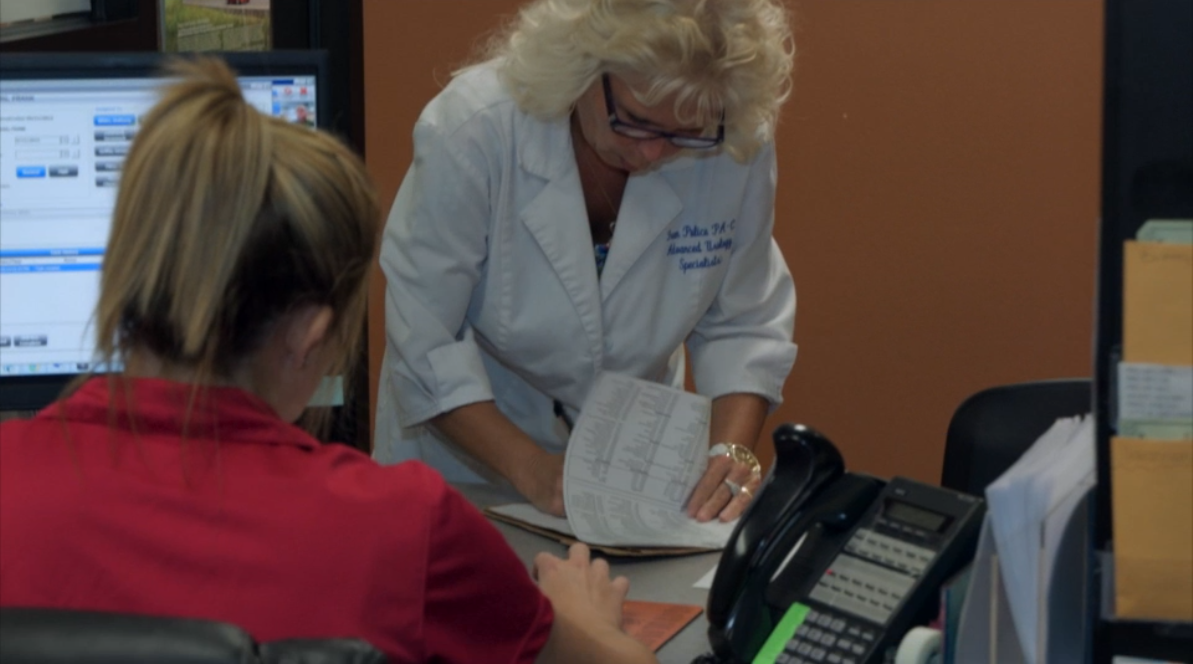KEY TAKEAWAYS:
- Green Light Laser Therapy is a minimally invasive, outpatient procedure for treating enlarged prostates, offering an alternative to traditional surgical methods.
- The therapy is particularly beneficial for patients on blood-thinning medications, as it helps stop bleeding while vaporizing the prostate.
- Studies show that the outcomes of Green Light Laser Therapy are comparable to those of the classic TURP at five years, providing patients with similar symptom relief and fewer complications.
Green Light Laser Therapy is a minimally invasive, outpatient procedure that has revolutionized the treatment of enlarged prostates. Dr. Evan Fynes, a urologist in Port Orange, FL, highlights the advantages of this cutting-edge technology over traditional surgical methods, particularly for patients on blood-thinning medications.
The Green Light Laser Technology
Dr. Fynes explains that the Green Light Laser is a special laser designed to vaporize the prostate in men with enlarged prostates causing urinary symptoms such as frequent nighttime urination, weak urinary stream, or difficulty forcing urine out. Initially, patients are prescribed medications to alleviate symptoms, but if these fail to improve their quality of life, Green Light Laser Therapy may be considered as an alternative treatment option.
This third-generation laser technology enables the vaporization of prostatic tissue, offering a less invasive and more efficient treatment for enlarged prostates.
Benefits for Patients on Blood Thinners
One of the primary advantages of Green Light Laser Therapy is its suitability for patients who cannot discontinue blood-thinning medications due to heart disease, stroke, or other conditions. The laser treatment not only vaporizes the prostate but also helps stop bleeding, making it a safer option for these patients compared to traditional surgical methods.
Comparable Outcomes to Classic TURP
Dr. Fynes notes that studies have demonstrated the outcomes of Green Light Laser Therapy to be equivalent to those of the classic Transurethral Resection of the Prostate (TURP) at five years. This means that patients can experience the same benefits in terms of symptom relief, but with a less invasive procedure and fewer complications.
Advanced Urology Institute
Dr. Evan Fynes is a dedicated urologist at the Advanced Urology Institute, the largest urology practice in Florida. The institute is committed to providing state-of-the-art, evidence-based care for patients, ensuring that they have access to the latest advances in urological treatment. With a team of highly skilled professionals, the Advanced Urology Institute offers comprehensive care for a wide range of urological conditions.
TRANSCRIPTION:
Five, ten years ago, you’d have to do an open surgery to remove the prostate gland.
Now, the green light laser allows you to do an outpatient surgery on a really big prostate
and then they go home with a catheter usually for a day.
Hello, Dr. Evan Fynes , I’m a urologist with Advanced Urology Institute.
The green light laser, it’s a special laser we use to basically vaporize the prostate
for guys who have enlarged prostates that cause urinary symptoms, whether it’s getting
up a lot at night, if they have a weak stream, if they really have to force their urine out.
Usually we initially start them on medications, there’s several medications to start.
If they fail those medications and they’re still, the symptoms are affecting their quality
of life, then the option we choose is to basically resect their prostate by going through their urethra.
The green light’s a new technology, I think they’re on their third generation laser.
With this new generation laser, you’re able to vaporize the prostatic tissue.
The benefits of the laser really, these days, it’s meant for guys who are still on blood
thinner medication, who can’t come off those because of heart disease or stroke or things like that.
So the laser’s meant to actually vaporize the prostate while they’re on these blood
thinners because it helps stop the bleeding as you vaporize the prostate.
I feel like the outcomes are very similar to the classic TURP.
There’s been several studies out that show they’re basically equivalent at five years.
REFERENCES:
- “GreenLight™ Laser Therapy.” https://www.centerforurologiccare.com/greenlight-laser-therapy/.
- “Benign Prostatic Hyperplasia (BPH) – Urology Care Foundation.” https://www.urologyhealth.org/urology-a-z/b/benign-prostatic-hyperplasia-(bph).
- “What Is A GreenLight Laser Prostatectomy? | QProstate.” https://qprostate.com.au/greenlight-laser-prostatectomy/greenlight-laser-prostatectomy/.


